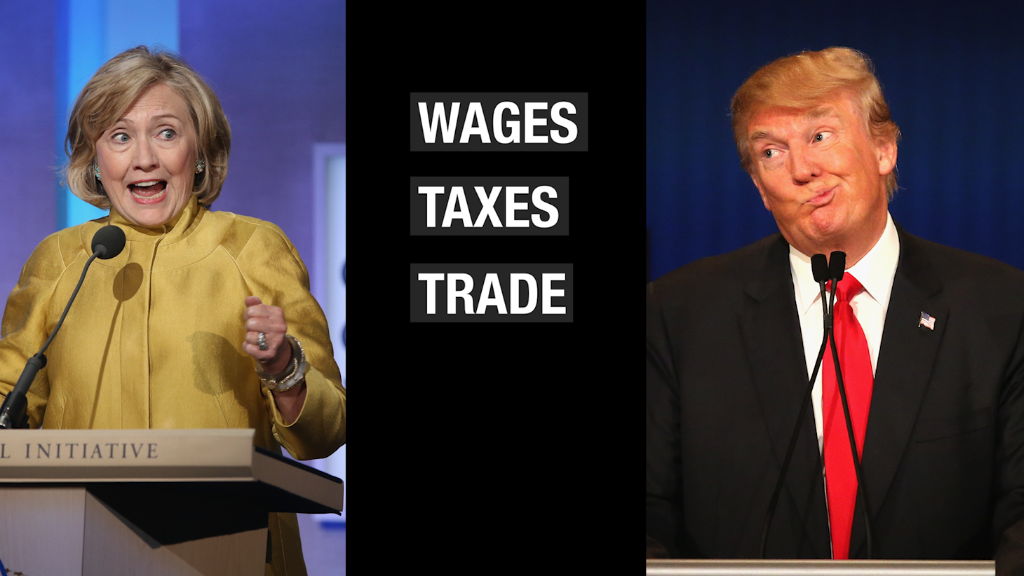
Voters may learn more about Donald Trump's tax proposals on Thursday, when he addresses the Economic Club of New York.
That would be a good thing. The election is less than two months away and we know less now than we did a year ago, when Trump put out a 4-page, single-spaced document outlining how he'd reform the tax code.
That plan has since been removed from his campaign site, replaced by a mere four paragraphs.
An independent analysis of Trump's original plan concluded that it would offer everyone a tax cut, but the rich would benefit the most by far. And it would cost more than $10 trillion over a decade.
By May of this year, there was talk that Trump would revise his plan to bring its costs down, among other things.
Since then we've learned that he would now call for somewhat higher income tax rates (12%, 25%, 33%) than he'd originally proposed (10%, 20%, 25%), although he did not specify the levels of income to which those new rates would apply.
He also reiterated that he wanted to simplify the tax code and offer an across-the-board tax cut. He said he still wants to eliminate special interest loopholes, along with the estate tax. He is also sticking to his guns on drastically lowering the tax on all business income to just 15%.
And just this week, the Trump campaign put out more details on the tax breaks Trump wants to offer to help parents with child care costs.
Okay, so what's left to know? So many things. They include:
Will he cut back on his 'yuge' standard deduction?
His original proposal would have raised the standard deduction to $25,000 for individuals and $50,000 for couples. It was the single most beneficial change for middle- and low-income families. Yet it was also the most expensive part of his plan, according to the Tax Foundation. If he doesn't move the cost down on this measure, he may have to hit many other parts of his original plan to come up with savings.
How much more will the rich pay under his new plan?
Chances are good they'd still pay less than they do today, but how much less relative to their tax bite under his original plan?
How would he tax capital gains and dividends?
His first plan would have kept today's preferential, income-based tax rates of 0, 15%, and 20% on long-term capital gains and qualified dividends.
What will he do about itemized deductions?
He had said he'd limit them, but didn't specify how or which deductions would be targeted. His original plan, however, explicitly preserved the mortgage interest deduction and the tax break for charitable contributions.
